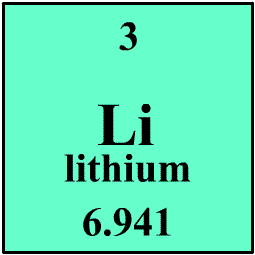
A new study raises concerns about cardiovascular malformations and other adverse pregnancy outcomes.
Lithium has been associated with increased rates of cardiovascular anomalies, primarily Ebstein's anomaly. Researchers in Israel conducted a prospective, observational study to examine associations between lithium and adverse pregnancy outcomes among women seeking advice from a teratology information service. The study population was 183 lithium-exposed pregnancies (90% with first-trimester exposure), 72 lithium-nonexposed pregnancies of women with bipolar disorder, and 748 pregnancies without teratogen exposure.
Rates of miscarriage, elective termination, and preterm delivery were higher in the lithium-exposed group than in the nonteratogen group. The three groups had similar overall rates of major malformations. Cardiovascular malformations were significantly more common with first-trimester lithium exposure (4.1% vs. 0.6% in nonteratogen-exposed pregnancies), but not after exclusion of spontaneously resolved anomalies (2.4% and 0.3%). Elevated cardiovascular risk with lithium exposure persisted after adjustment for potential confounders (smoking, birth order, and bipolar disorder).
RESULTS:There were significantly more miscarriages (adjusted odds ratio=1.94, 95% CI=1.08-3.48) and elective terminations of pregnancy (17/183[9.3%] compared with 15/748 [2.0%]) in the lithium-exposed group compared with the nonteratogenic exposure group. The rate of major congenital anomalies after exclusion of genetic or cytogenetic anomalies was not significantly different between the three groups (lithium-exposed in the first trimester: 8/123 [6.5%]; bipolar: 2/61 [3.3%]; nonteratogenic: 19/711 [2.7%]). Cardiovascular anomalies occurred more frequently in the lithium group exposed during the first trimester when compared with the nonteratogenic exposure group (5/123 [4.1%] compared with 4/711 [0.6%]) but not after excluding anomalies that spontaneously resolved (3/123 [2.4%] compared with 2/711 [0.3%]). Ebstein's anomaly was diagnosed in one lithium-exposed fetus and in two retrospective lithium cases that were not included because contact with the information service was made after the prenatal diagnosis by ultrasound. The rate of noncardiovascular anomalies was not significantly different between the groups. The rate of preterm deliveries was higher in the lithium group compared with the nonteratogenic exposure group (18/131 [13.7%] compared with 41/683 [6.0%]).
CONCLUSIONS:
Lithium treatment in pregnancy is associated with a higher rate of cardiovascular anomalies. Women who are treated with lithium during organogenesis should undergo fetal echocardiography and level-2 ultrasound.
COMMENT
Although this study reports higher rates of miscarriage, preterm birth, and persistent cardiovascular anomalies with in utero lithium exposure, the small number of anomalies weakens the power of group comparisons. With few subjects having bipolar disorder but not lithium exposure, determining the effects of the underlying illness is difficult. Risks of lithium discontinuation and untreated bipolar disorder during pregnancy must be weighed against medication risks. Among the alternatives, mood stabilizers such as valproate and carbamazepine are teratogens; lamotrigine has unclear efficacy for mania. Clinicians should ensure that women of childbearing age who take lithium use appropriate birth control, should counsel them about potential risks in pregnancy, and could consider treatment with an antipsychotic during pregnancy, provided that it effectively treats the patient's illness.
Deborah Cowley, MD reviewing Diav-Citrin O et al. Am J Psychiatry 2014 Apr 29.
CITATION(S):
Diav-Citrin O et al. Pregnancy outcome following in utero exposure to lithium: A prospective, comparative, observational study. Am J Psychiatry 2014 Apr 29; [e-pub ahead of print]. [PubMed® abstract]





 留言列表
留言列表
 線上藥物查詢
線上藥物查詢 